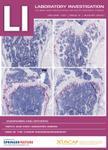版权所有:内蒙古大学图书馆 技术提供:维普资讯• 智图
内蒙古自治区呼和浩特市赛罕区大学西街235号 邮编: 010021

作者机构:Univ Ferrara Dept Expt & Diagnost Med Med Genet Sect I-44100 Ferrara Italy Leiden Univ Dept Human Genet Med Ctr NL-2300 RA Leiden Netherlands
出 版 物:《LABORATORY INVESTIGATION》 (实验室研究)
年 卷 期:2010年第90卷第9期
页 面:1396-1402页
核心收录:
学科分类:1001[医学-基础医学(可授医学、理学学位)] 10[医学]
基 金:Dutch Duchenne Parent Project ZonMw Telethon Italy [GGPU7011] TREAT-NMD network of excellence
主 题:antisense oligonucleotides digital array duchenne muscular dystrophy exon skipping transcript quantification
摘 要:Antisense oligonucleotide (AON)-mediated exon skipping aimed at restoring the reading frame is a promising therapeutic approach for Duchenne muscular dystrophy that is currently tested in clinical trials. Numerous AONs have been tested in (patient-derived) cultured muscle cells and the mdx mouse model. The main outcome to measure AON efficiency is usually the exon-skipping percentage, though different groups use different methods to assess these percentages. Here, we compare a series of techniques to quantify exon skipping levels in AON-treated mdx mouse muscle. We compared densitometry of RT-PCR products on ethidium bromide-stained agarose gels, primary and nested RT-PCR followed by bioanalyzer analysis and melting curve analysis. The digital array system (Fluidigm) allows absolute quantification of skipped vs non-skipped transcripts and was used as a reference. Digital array results show that 1 ng of mdx gastrocnemius muscle-derived mRNA contains B1100 dystrophin transcripts and that 665 transcripts are sufficient to determine exon-skipping levels. Quantification using bioanalyzer or densitometric analysis of primary PCR products resulted in values close to those obtained with digital array. The use of the same technique allows comparison between different groups working on exon skipping in the mdx mouse model. Laboratory Investigation (2010) 90, 1396-1402;doi:10.1038/labinvest.2010.98;published online 10 May 2010